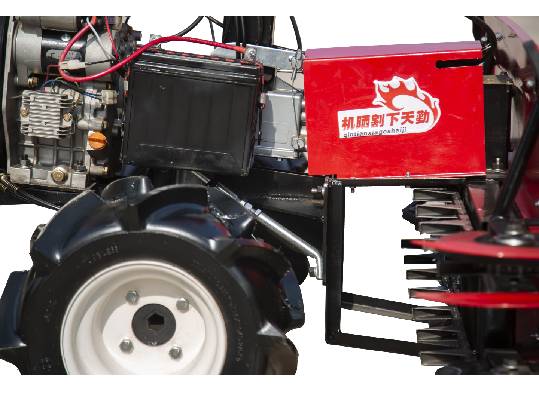wheat cutter reaper machine
The Evolution of the Wheat Cutter Reaper Machine
In the realm of agricultural advancements, the wheat cutter reaper machine stands out as a revolutionary innovation that dramatically transformed the way farmers harvest their crops. This machine has played a pivotal role in increasing efficiency and reducing the labor intensity associated with harvesting wheat, one of the world's staple crops. The journey of the wheat cutter reaper machine is a fascinating tale that intertwines technology, agriculture, and economic development.
Historical Background
The origins of the reaper can be traced back to the early 19th century, a time when agricultural practices were labor-intensive and heavily reliant on manual labor. Farmers would use sickles or scythes to harvest wheat, a process that was not only time-consuming but also physically demanding. The introduction of mechanical harvesting machines was a game-changer and marked the beginning of a new agricultural era.
Cyrus McCormick is often credited with the first successful mechanical reaper in 1831. His invention significantly reduced the time it took to harvest wheat. McCormick’s reaper utilized a series of moving blades to cut the wheat stalks and a collecting mechanism to gather them for bundling. This innovative machine allowed a single farmer to accomplish the work that previously required several men over a prolonged period.
Technological Advancements
The wheat cutter reaper machine has undergone numerous technological advancements since its inception. Early models were primarily horse-drawn and required a significant amount of horsepower to operate. Today, modern reapers are equipped with advanced features such as self-propulsion, GPS technology, and automatic settings that optimize the harvesting process based on field conditions.
One of the most notable advancements in modern reapers is the combine harvester, which integrates several functions into one machine. Not only does the combine cut and gather wheat, but it also threshed the grain, separating it from the chaff. With the ability to operate in various weather conditions and across diverse terrains, combines have revolutionized wheat harvesting, making it possible to harvest larger fields in a fraction of the time it took with traditional methods.
wheat cutter reaper machine

Impact on Agriculture
The impact of the wheat cutter reaper machine on agriculture is profound. By significantly increasing the speed of harvesting, these machines have allowed farmers to maximize their yield and reduce the labor costs associated with harvesting. This efficiency is crucial, especially in regions where the timing of harvest can affect the quality and quantity of the produce.
Moreover, the introduction of reapers has contributed to the mechanization of agriculture, leading to a shift in farming practices worldwide. As reapers became more widespread, the agricultural workforce began transitioning from manual labor to operating and maintaining machinery. This shift has not only increased productivity but has also led to the development of new skills and job opportunities within rural communities.
Economic Considerations
Economically, the wheat cutter reaper machine has played a significant role in the agricultural sector. The increased efficiency in harvesting has allowed for higher outputs, which contributes to food security and supports the livelihoods of millions of farmers. Countries that have embraced mechanization have seen improvements in their agricultural productivity, leading to economic growth and reduced poverty levels.
Additionally, the advancements in harvesting technology have made it possible for farmers to expand their operations. With the ability to harvest more efficiently, farmers can take on larger fields, diversify their crops, and implement better crop rotation practices, all of which are essential for sustainable agriculture.
Conclusion
The wheat cutter reaper machine is a prime example of how technological innovation can transform an industry. From its humble beginnings in the 19th century to the sophisticated machines we see today, the evolution of the wheat reaper has paved the way for modern agricultural practices. As we face challenges such as climate change and a growing global population, the continued advancement of harvesting technology will be essential in ensuring a sustainable and productive agricultural future. The journey of the wheat cutter reaper is not just a testament to human ingenuity but also a vital component of our food system that will shape the future of farming for generations to come.
Latest news
-
Mini Combine Harvester for Soybean | Compact & Efficient Soybean Harvesting SolutionsNewsNov.24,2025
-
Mini Combine Harvester for Paddy – Compact, Efficient Rice Harvesting SolutionsNewsNov.24,2025
-
Mini Chain Harvester: Compact Forestry Solutions for Sustainable LoggingNewsNov.23,2025
-
Kartar Mini Harvester – Compact, Efficient Harvesting Machinery for Small FarmsNewsNov.23,2025
-
Compact Power: Elevate Your Farming with Harvesting Machine SmallNewsNov.22,2025
-
Discover the Power and Potential of Harvester Mini Combine Machines | Efficient Small-Scale HarvestingNewsNov.22,2025








